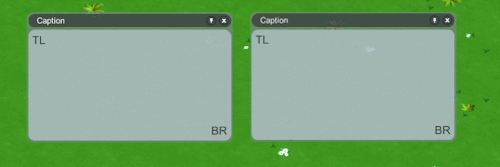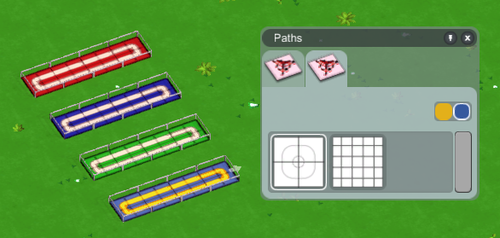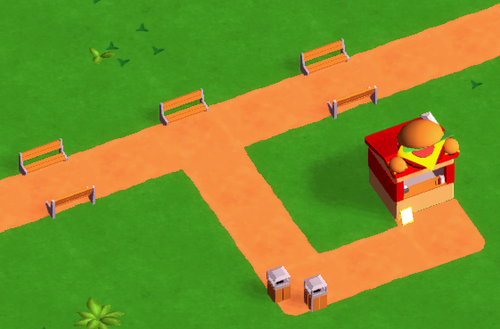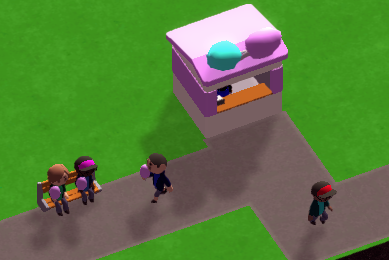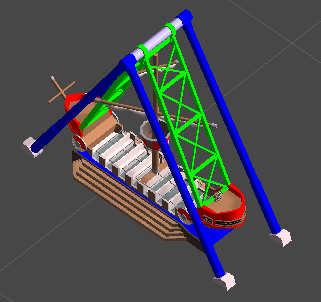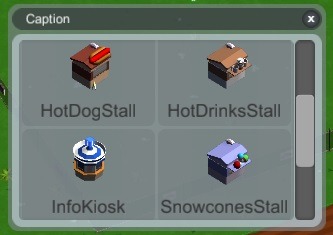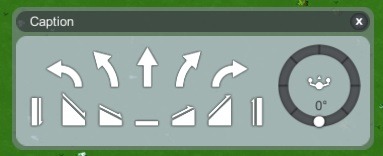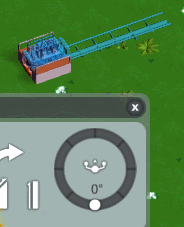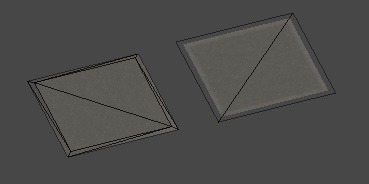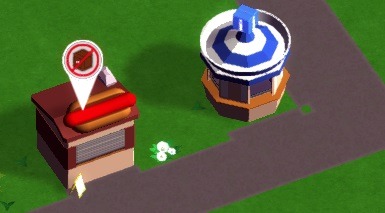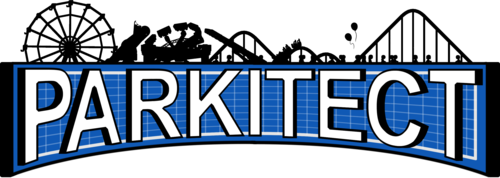We put the swinging ship from last weeks livestream into the game:
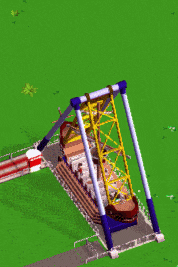
Garret also modeled another ride this week but that one probably won’t go into the game anytime soon.
The old ride platforms got replaced with path tiles (depending on which type of path is connected to the exit):
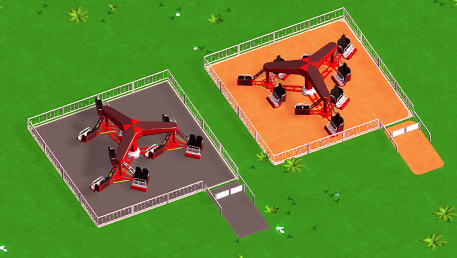
That small gap between the ride and exit tile has to be removed.
We experimented with giving parts of our models a bit more depth by drawing some shading into the vertex colors:
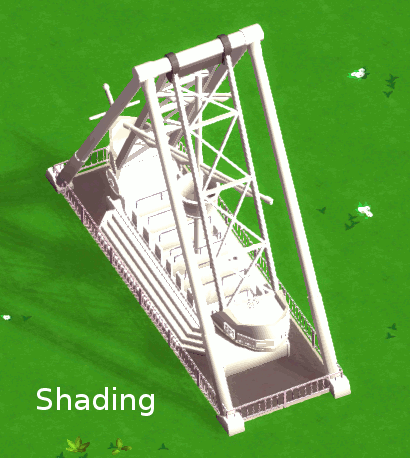
It’s pretty subtle but we think it’s worth the effort.
And of course there’s also been more UI work this week…
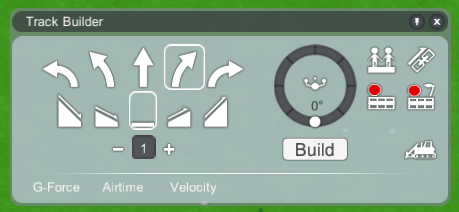
Like the rest of the UI it isn’t final, but the coaster builder is quite useable now. There’s still a couple things missing, but it’s really exciting to finally have an easy method for building coasters :)
